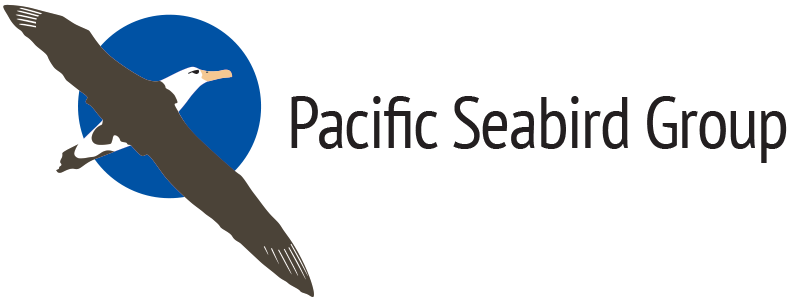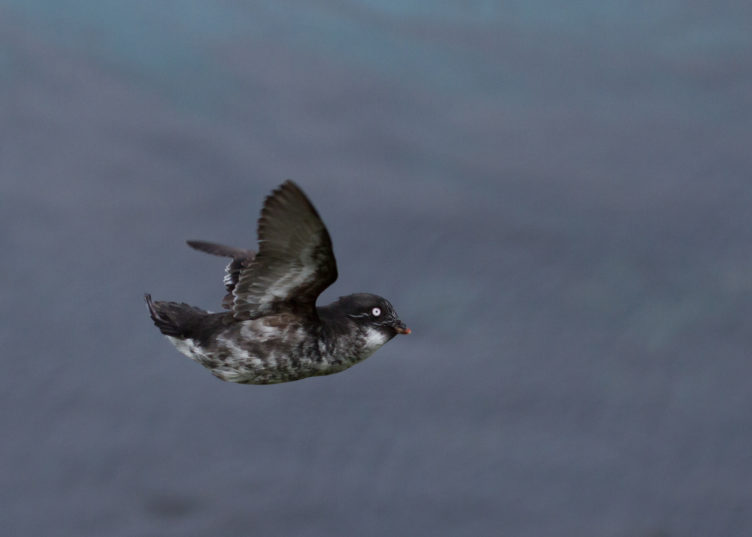Holthuijzen (2024)
Author Information
Wieteke Holthuijzen: University of Tennessee, Knoxville
In 2023, I continued to work in collaboration with the U.S. Fish and Wildlife Service and the non-profit organization Island Conservation on research related to invasive house mice (Mus musculus) on Sand Island of Kuaihelani (Midway Atoll NWR). Beginning in 2015, house mice were observed attacking and preying upon adult nesting seabirds—in particular, Mōlī (Laysan Albatross, Phoebastria immutabilis)—on Sand Island during the winter. These mouse attacks increased in the following winter of 2016, both in terms of frequency and severity, throughout Sand Island. In turn, the U.S. Fish and Wildlife Service began to plan efforts to eradicate invasive house mice (known as the Seabird Protection Project) with Island Conservation. In the years that followed, a variety of research projects took place to better understand house mouse population dynamics, diet, and bait preference, as well as studies on prey abundance and non-target mitigation strategies.
Research on Sand Island house mouse diet was formally published in 2023 in PLOS ONE. Next-generation sequencing (NGS) of mouse fecal samples and stable isotope analyses revealed that Sand Island’s house mice mainly consumed arthropods (up to 62% of diet), with nearly equal (but substantially smaller) contributions of C3 plants (15%), C4 plants (12%), and Mōlī (12%). Although seabird tissue was a small portion of mouse diet, house mice consumed many detrital-feeding arthropods found in and around seabird carcasses, such as isopods, flesh flies, ants, and cockroaches. Additionally, most arthropods and plants eaten by mice were non-native (including some invasive species as well). House mouse diet composition differed among habitat types but changed minimally throughout the year, indicating that mice were not necessarily limited by food source availability or accessibility.
Research on the potential for non-target poisoning of the endangered Koloa Pōhaka (Laysan duck, Anas laysanensis) in relation to mouse eradication on Sand Island was also published in 2023 in Wildfowl. Although Koloa Pōhaka were translocated to nearby Eastern Island during the mouse eradication, concerns remained over the potential risk of secondary poisoning to Koloa Pōhaka through consumption of arthropods that had also eaten brodifacoum. To determine which arthropods to monitor for brodifacoum residue, we used NGS to identify arthropod species consumed by Koloa Pōhaka. Via NGS, we found that Koloa Pōhaka frequently ate cockroaches (order: Blattodea), freshwater ostracods (Cyprididae), midges (Chironomidae) and isopods (Porcellionidae). To a lesser degree, Koloa Pōhaka also ate spiders (Araneae), moths (Lepidoptera), beetles (Coleoptera), springtails (Entomobryomorpha), thrips (Thysanoptera), and crabs (Decapoda). Monitoring of brodifacoum residue in various organisms on Sand Island is ongoing.
The eradication of invasive house mice took place in July of 2023, which involved several aerial and on-the-ground applications of brodifacoum. Unfortunately, house mice were observed in the weeks following bait application and the mouse eradication was officially declared unsuccessful. The U.S. Fish and Wildlife Service and Island Conservation continue to investigate potential causes that may have contributed to the eradication failure. In particular, I am collaborating on research to determine if house mice on Sand Island carry specific genetic mutations in the Vkorc1 gene that are associated with rodenticide resistance.






